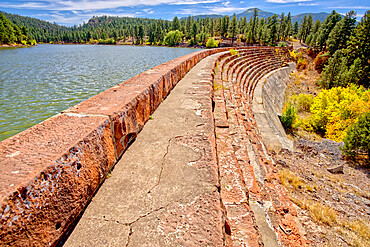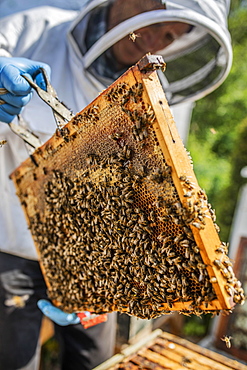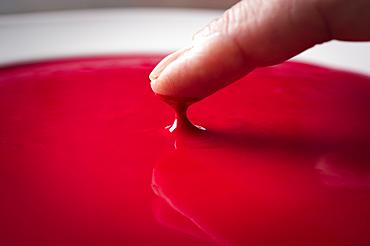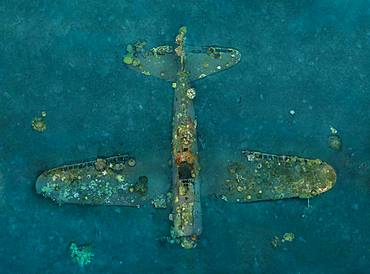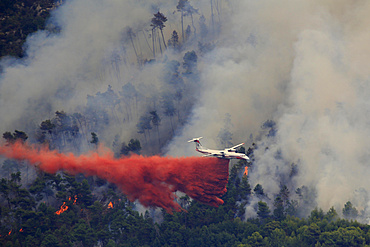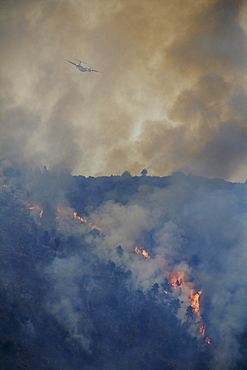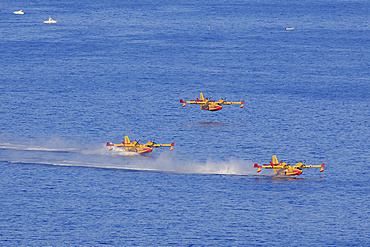Recent searches
Loading...
1174-9659 - High angle close up of black and yellow 'Please Wait Here' sign on asphalt ground.
1174-9663 - Close up of red and white Covid-19 distancing sign.
1174-9661 - Close up of large number of traffic cones lined up on a harbour wall.
832-389722 - Covid 19 test done on a woman laying down on the hospital bed
1178-30564 - Mother watching son (8-9) during e-learning at home due to Covid-19 lockdown
1311-253 - A walkway on top of the Santa Fe Dam in Williams, Arizona, United States of America, North America
1116-49842 - Man with congenital blindness crossing the street using his cane
832-388063 - Beekeeper with protective suit checks his honeyBees (Apis) ian der Wabe, North Rhine-Westphalia, Germany, Europe
832-388062 - Beekeeper with protective suit checks his honeyBees (Apis) ian der Wabe, North Rhine-Westphalia, Germany, Europe
832-388061 - Beekeeper with protective suit controls honeyBees (Apis) on the comb on the stock, North Rhine-Westphalia, Germany, Europe
1160-4251 - Sigmaringen Castle at sunset, Upper Danube Valley, Swabian Jura, Baden-Wurttemberg, Germany, Europe
832-384414 - X-ray control on screen, Security Check, Germany, Europe
832-385561 - Police officer with sign, stop police and pistol, Erfurt, Germany, Europe
832-384583 - Heating cost control with thermostatic valve, Germany, Europe
1178-28233 - Airplane flying past control tower at sunset
805-1376 - Straw sand control barriers around the 4th century Rawak Buddhist stupa, Hotan, Xinjiang, China, Asia
844-21932 - View of The Three Gorges Dam and visitors centre at Sandouping, Sandouping, Hubei, China, Asia
844-21933 - View of The Three Gorges Dam and visitors centre at Sandouping, Sandouping, Hubei, China, Asia
844-21931 - View of ship locks at The Three Gorges Dam at Sandouping, Sandouping, Hubei, China, Asia
1116-46774 - Train And Levers, Tynemouth, Tyne And Wear, England
832-383778 - Block printing, finger checking consistency of red color on plate, Bad Aussee, Styria, Austria, Europe
832-383766 - Employee, 25-30 years, checking part of 3D printer in production laboratory, FabLab, Wattens, Tyrol, Austria, Europe
832-383758 - Solar installation technician checking solar panels with his laptop computer
832-383759 - Solar installation technician checking solar panels with a measuring device
832-383782 - Hands checking different wool felt hat bodies, shades of green, on workbench, hatmaker workshop, Bad Aussee, Styria, Austria, Europe
832-383794 - Hatter examining finished wool felt hat, hat molds on wooden shelves and finished hats behind, hatmaker workshop, Bad Aussee, Styria, Austria, Europe
832-383776 - Young woman with white lab coat measuring controller with meter, Austria, Europe
860-287442 - Tara Pacific expedition - november 2017 Kimbe Bay, papua New Guinea, Zero wreck: Coral growth on this wreck is from a period of 74 years ! D: 15 m The ZERO, is a Japanese WW2 fighter plane wreck. This Zero wreck was discovered in January 2000 by local William Nuli while he was freediving for sea cucumbers. He asked the Walindi Plantation Resort dive team if they might know what it was, and when they investigated they uncovered the intact wreck of a Zero fighter, resting on a sedimented bottom in 15 m depth. This World War II Japanese fighter is almost completely intact. The plane is believed to have been ditched, the pilot is believed to have survived, but was never found on the island. He never returned home. Maybe he disappeared in the jungle? On 26th December 1943, during the battle of Cape Gloucester, the Japanese pilot made an emergency landing, ditching his Mitsubishi A6M Zero plane into the sea approximately 100m off West New Britain Province. The plane was piloted by PO1 Tomiharu Honda of the 204st K?k?tai. His fate is unknown but it is believed the he made a controlled water landing after running out of fuel and survived. Although he failed to return to his unit, the plane was found with the throttle and trim controls both set for landing and the canopy was open. There are no visible bullet holes or other shrapnel damage and the plane is still virtually intact after over 70 years underwater. It is a A6M2 Model 21 Zero, made famous for its use in Kamikaze attacks by the Japanese Imperial Navy. The wreck has the Manufacture Number 8224 and was built by Nakajima in late August 1942.
860-287445 - Tara Pacific expedition - november 2017 Saltwater crocodile exhaling through the nose (bouyancy control) near Garua Island, Kimbe Bay, Papua New Guinea
860-287440 - Tara Pacific expedition - november 2017 Zero wreck, vertical view Orthomosaic from 3D photogrammetry (13500 x 10000 px). D: 15 m Kimbe Bay, papua New Guinea, Coral growth on this wreck is from a period of 74 years ! The ZERO, is a Japanese WW2 fighter plane wreck. This Zero wreck was discovered in January 2000 by local William Nuli while he was freediving for sea cucumbers. He asked the Walindi Plantation Resort dive team if they might know what it was, and when they investigated they uncovered the intact wreck of a Zero fighter, resting on a sedimented bottom in 15 m depth. This World War II Japanese fighter is almost completely intact. The plane is believed to have been ditched, the pilot is believed to have survived, but was never found on the island. He never returned home. Maybe he disappeared in the jungle? On 26th December 1943, during the battle of Cape Gloucester, the Japanese pilot made an emergency landing, ditching his Mitsubishi A6M Zero plane into the sea approximately 100m off West New Britain Province. The plane was piloted by PO1 Tomiharu Honda of the 204st K?k?tai. His fate is unknown but it is believed the he made a controlled water landing after running out of fuel and survived. Although he failed to return to his unit, the plane was found with the throttle and trim controls both set for landing and the canopy was open. There are no visible bullet holes or other shrapnel damage and the plane is still virtually intact after over 70 years underwater. It is a A6M2 Model 21 Zero, made famous for its use in Kamikaze attacks by the Japanese Imperial Navy. The wreck has the Manufacture Number 8224 and was built by Nakajima in late August 1942.
1276-1581 - Claerwen Dam in the Elan Valley in Wales, United Kingdom, Europe
1276-1582 - Claerwen Dam in the Elan Valley in Wales, United Kingdom, Europe
1116-43507 - On And Off Switch, Boston, Massachusetts, United States Of America
1116-43506 - On And Off Switch, Boston, Massachusetts, United States Of America
733-8648 - Nihon Bunraku puppet theatre performance, Tokyo, Japan, Asia
1116-43155 - A Teenage Girl Sits By The Motor At The Back Of A Motorboat With Her Face Illuminated By Sunlight, Ontario, Canada
1116-42767 - Agriculture - Obliquebanded leafroller (Choristoneura rosaceana) insect trap placed in a cherry orchard in Spring. Its function is an early-warning system to detect adult insect emergence and monitor pest populations so that timely control programs can be
1116-42775 - Agriculture - Field of wheat stubble being burned after the harvest to control diseases, reduce weed competition and to make the next planting easier. Volunteer fire fighters use the burning for training / near Williams, California, USA.
1116-42106 - Flying in a helicopter over the icefields in Kluane National Park, near Haines Junction, Yukon, Canada
1116-42107 - Flying in a helicopter over the icefields in Kluane National Park, near Haines Junction, Yukon, Canada
857-96075 - Aerial view of coastal road on Snaefellsnes Peninsula, Iceland
857-96076 - Aerial view of Ring Road in Snaefellsnes Peninsula, Iceland
857-96040 - Firefighters waiting for approval from Incident Control to put fire on the ground, Guanaba, Queensland, Australia
857-95847 - Sunset over Amsterdam from viewed from airplane, Amsterdam, Netherlands
832-381878 - Residents of the village of Iwasoudanei checking the quality of the dried rhizomes of organically cultivated Irises (Iris germanica), which are stored on the roof of the mud house of Hassan Bouship, the chief of the village of Iwasoudane, for natural cosmetics in Europe, Ait Inzel Gebel Region, Atlas Mountains, Morocco, Africa
832-381877 - Mohammed El Malaoui checking the quality of the dried rhizomes of organically cultivated Irises (Iris germanica), which are stored on the roof of the mud house of Hassan Bouship, the chief of the village of Iwasoudane, for natural cosmetics in Europe, Ait Inzel Gebel Region, Atlas Mountains, Morocco, Africa
832-380520 - Avalanche control on the mountain slope with snow, Nauders, Tyrol, Austria, Europe
1116-40652 - Controlled Burning Of Heather, Yorkshire, England
1116-40390 - View Of Control Tower Out The Window Of A Commercial Airplane
857-94800 - Hiking girl in Sutjeska national park in Bosnia and Herzegovina, looking over from a watch tower. Sunny day and blue sky over the scene.
776-5001 - Port Control Tower, Le Havre, Normandy, France, Europe
857-93724 - Rodeo cowboy pickup man with bucking bronco in arena, Montana
857-93720 - Bucking horse airborne with cowboy after sunset at a Montana summer rodeo
857-93721 - cowboy pickup man with bucking bronco in arena
1116-39491 - Crop dusting helicopter spraying a corn field, Iowa, United States of America
1116-39545 - Cucumber harvest, Preston, Maryland, United States of America
1116-39460 - Combine harvesting a row of cut barley with blue sky and clouds, Acme, Alberta, Canada
1116-39489 - Crop dusting helicopter spraying a corn field, Iowa, United States of America
857-93139 - Person Mountain Biking On Trail In Desert Landscape
857-93140 - Man Mountain Biking On Rocky Landscape In Gunnison
857-93141 - Smiling Woman Mountain Biking On Rocky Landscape In Gunnison
1225-378 - Gaucho on horseback herding goats along Route 40, Argentina, South America
1225-376 - Gaucho on horseback herding goats along Route 40, Argentina, South America
1116-39193 - Control Center & Antu (Sun) Unit Telescope 1, Belonging To The Very Large Telescope (Vlt) Operated By The European Southern Observatory At Paranal, Antofagasta Region, Chile
1116-39192 - Service Tunnel Under The Control Room Of The Very Large Telescope Of The European Southern Observatory, Paranal, Antofagasta Region, Chile
1116-39042 - Agriculture - Rice stubble being burned after the crop has been harvested, a controversial practice. Growers burn fields to remove heavy crop residue so they can re-enter fields early the next spring to plant soybeans, and to control some rice diseases. E
857-92969 - Riding bicycle throuhg oak (Quercus petraea- Lat) forest. Shot in the morning on a mountain bike track in development near Trstenik city, Serbia.
1167-1146 - Herder on motorcycle with goat and sheep herd crosses road to Mandalgov in hill country South of Ulan Bator, Tov, Central Mongolia, Central Asia, Asia
1109-2539 - Gauchos riding horses to round up sheep, El Chalten, Patagonia, Argentina, South America
1109-2538 - Gauchos riding horses to round up sheep, El Chalten, Patagonia, Argentina, South America
857-92590 - A man mountain biking on the slickrock trail, Moab, Utah.
857-92588 - A man mountain biking on the Hymasa trail, Moab, Utah.
857-92589 - A man mountain biking on the slickrock trail, Moab, Utah.
857-91896 - A man mountain biking across a green tundra scene in Colorado.
857-92261 - Mature Woman Sitting In a Wood Canvas Canoe in a City Environment Looking Over Shoulder In Between Paddle Strokes
857-91898 - A man sitting on his mountain bike in a field of purple flowers and stormy grey clouds enjoying the view.
857-91897 - A man riding his mountain bike across a field of purple flowers on a stormy day.
832-378460 - Fire extinction, firefighting aircraft Canadair CL 415, French Sécurité Civile, dropping seawater, large-scale forest fire in Castellar, Maritime Alps
832-378459 - Fire extinction, firefighting aircraft Dash 8 Q400 MR, French Sécurité Civile, dropping extinguishing agent, large-scale forest fire in Castellar, Maritime Alps, Provence-Alpes-Côte d'Azur, France, Europe
832-378462 - Fire extinction with firefighting aircraft Dash 8 Q400 MR, French Sécurité Civile, large-scale forest fire in Castellar, Maritime Alps, Provence-Alpes-Côte d'Azur, France, Europe
832-378463 - Fire extinction, firefighting aircraft Canadair CL 415, French Sécurité Civile, dropping seawater, large-scale forest fire in Castellar, Maritime Alps
832-378457 - Firefighting aircraft Canadair CL 415, French Sécurité Civile, filling with seawater to extinguish forest fires, Mediterranean Sea, Provence-Alpes-Côte d'Azur, France, Europe
1188-749 - Quality control at the Etchart vineyard in Cafayate region, Salta, Argentina, South America
1188-748 - Quality control at the Etchart vineyard in Cafayate region, Salta, Argentina, South America
1113-99741 - Radio control tower with view platform, Socialist architecture in the capital Podgorica, Montenegro, Western Balkan, Europe
857-90662 - Ingrid Backstrom skiing in the Wasatch Mountains, Utah, United States of America
857-90692 - Hannah Hardaway skiing at Loveland, Colorado, United States of America
857-90656 - Suzanne Montgomery and Bill Ericksn skiing at The Canyons, Park City, Utah, United States of America
857-90667 - Chris Davenport and Matt Ross hiking ridgeline at Aspen Highlands, CO, United States of America
857-90664 - Colin Puskas, big air in Alta, Utah, United States of America
857-90691 - Charlotte Moats skiing fresh powder at Snowbird, Utah, United States of America
857-90675 - Wade Simmons dropping a cliff in Virgin, Utah, United States of America






